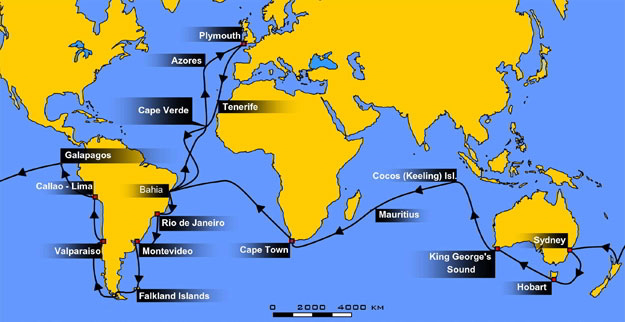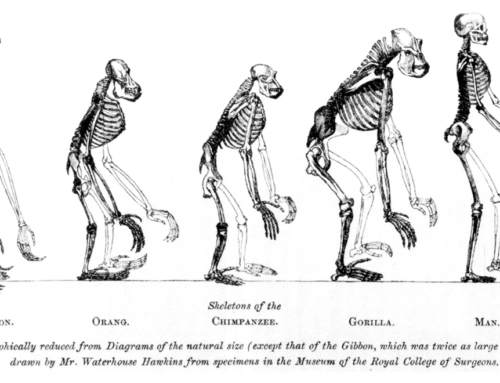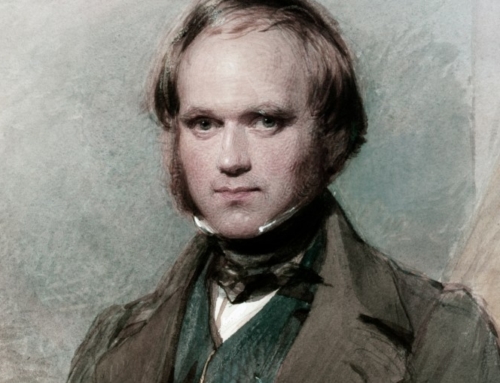Charles Darwin set sail on HMS Beagle on 27 December 1831 as a gentleman companion to Captain Fitz Roy. There was a crew of seventy-three. The ship’s naturalist left the ship early in the voyage and so Darwin assumed this role. The voyage circumnavigated the world and lasted almost five years. Darwin spent much of his time investigating the geology and natural history of the areas visited.1
- HMS Beagle’s voyage, 1831-36
- HMS Beagle at anchor Tierra del Fuego.
- Charles Darwin
During the voyage Darwin’s specimens were sent back to Cambridge for examination together with his journals. As a result he was already well known and respected within the scientific community by the time he returned on HMS Beagle on 2 October 1836.2
1 Darwin, Charles (ed) (1839a), Narrative of the surveying voyages of His Majesty’s Ships Adventure and Beagle between the years 1826 and 1836, describing their examination of the southern shores of South America, and the Beagle’s circumnavigation of the globe. Journal and remarks. 1832-1836, III, Henry Colburn, London.
<http://darwin-online.org.uk/content/frameset?itemID=F10.3&viewtype=text&pageseq=1> accessed 24 May 2013 2 Darwin, Charles (1835), Extracts from letters to Professor Henslow [privately printed], Cambridge.
<http://darwin-online.org.uk/content/frameset?itemID=F1&viewtype=text&pageseq=1> accessed 24 May 2013
<http://darwin-online.org.uk/content/frameset?itemID=F10.3&viewtype=text&pageseq=1> accessed 24 May 2013 2 Darwin, Charles (1835), Extracts from letters to Professor Henslow [privately printed], Cambridge.
<http://darwin-online.org.uk/content/frameset?itemID=F1&viewtype=text&pageseq=1> accessed 24 May 2013






